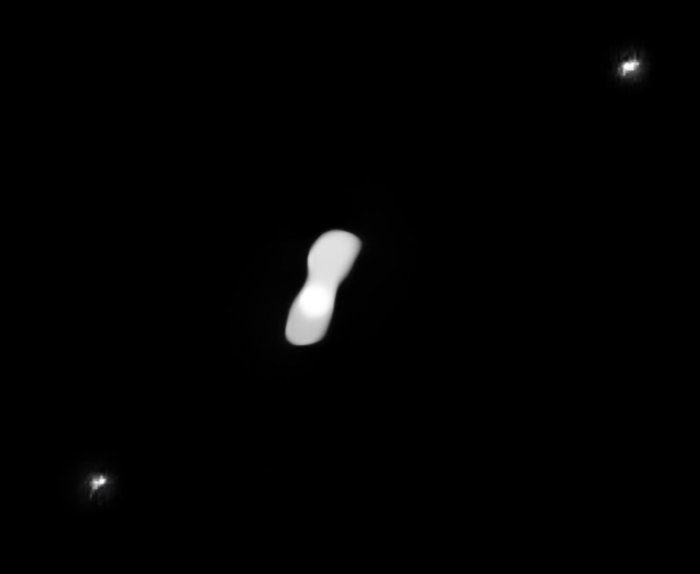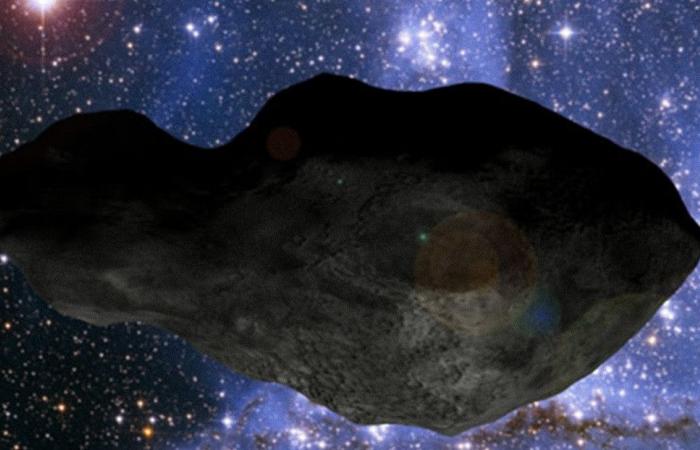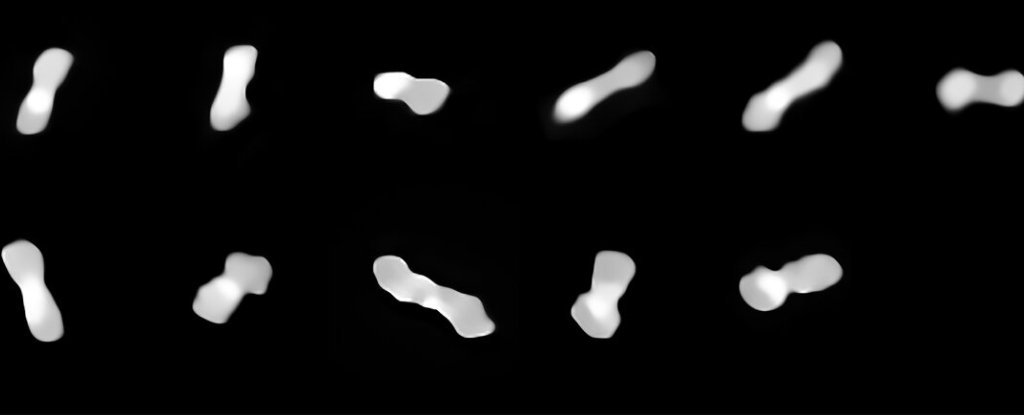Astronomers have obtained some intriguing photos of Kleopatra, a dog-bone-shaped asteroid circling between Mars and Jupiter. It is a 168-mile-long asteroid nicknamed the “dog-bone” due to its odd shape. The most recent observations provide new information about the object’s shape, its dangerous spin, and how its moons are likely formed.
In addition to its odd shape, it is home to two small moons. Kleopatra is spinning so fast along its axis that it is on the verge of collapsing. In fact, the presence of its two moons, AlexHelios and CleoSelene, may be explained by the planet’s high rotation rate.
For approximately two decades, we have known about this unbelievable cosmic feature, but scientists are now getting the detailed images we have seen. This helps us understand Kleopatra’s formation, and the results show that the moons were made from the material of bone asteroid.
“Kleopatra is truly a unique body in our Solar System,” said astronomer Franck Marchis of the SETI Institute and the Laboratoire d’Astrophysique de Marseille in France.

“Science makes a lot of progress thanks to the study of weird outliers. I think Kleopatra is one of those, and understanding this complex, multiple asteroid system can help us learn more about our Solar System.”
Astronomers used new photos of Cleopatra in two pieces of research published in Astronomy & Astrophysics to achieve a more exact set of measurement constraints for the asteroid, developed a new 3D model, and defined the orbits of Alex Helios and CleoSelen correctly.
The research was conducted with observations from the SPHERE instrument, connected with the Very Large Telescope of the European Southern Observatory in Chile. As a result, the researchers could get photographs from multiple angles while Cleopatra plummeted through space.

According to calculations, Kleopatra is around 270 kilometres (168 miles) long, with one of its dumbbell lobes larger, linked by a thick neck. The researchers were subsequently able to compute Kleopatra’s volume using the newly stated dimensions.
Meanwhile, AlexHelios and CleoSelene’s orbits were sought by a second team. This is important because orbits are confined by the gravitational field they move in and are correlated with the masses of the system.
“This had to be resolved because if the moons’ orbits were wrong, everything was wrong, including the mass of Kleopatra,” explained astronomer Miroslav Brož of Charles University in Czechia.
The team was able to define the moons’ orbits more accurately than before via new observations combined with mathematical modelling. The computation of Kleopatra mass was revised, resulting in a further 2.97 x 1018 kg considerably lower than prior calculations, resulting in a volume of 4.64 x 1018 kg. Marchis and his colleagues determined Cleopatra’s density using Brož’s research. The density of the asteroid was relatively low, given that Cleopatra was rich in metal.

This tells about Kleopatra’s formation. First, the low density means the asteroid is a loosely hanging “rubble pile” of rock pieces. Such rubble piles are developed when the material is pushed away from a parent body during a massive collision and gradually reassembles over time.
The asteroid rotates at a quicker rate of about 5.4 hours. Because of the asteroid’s critical spin, effective gravity at the equator is minimal, and material in this region may be rising away from it.
If this is valid, it explains how AlexHelios and CleoSelene formed. If material is being removed from Kleopatra, it might have gathered in orbit and formed the moons, making them the asteroid’s children.
The two papers have been published in Astronomy & Astrophysics.


